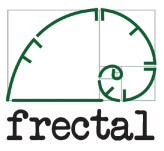For those of you with an interest in healthcare, then health IT you will be well aware of the huge interoperability challenge of our time.
The challenge of interoperability (aka getting health IT systems to talk to one another in an intelligible way) is perhaps the tech challenge that has got most attention in the sector in recent years.
Of course like any challenge in the complex system of healthcare, the interoperability challenge isnt just a tech one, but has real people and process dimensions too. Take the US Healthcare market where c 16% of GDP is spent on healthcare and competition between healthcare providers is rife.. an environment which doesn’t lend itself to data sharing as you may appreciate.
Back to the tech aspect of the challenge and the advent of openAPIs (open Application Programming Interfaces) from the rest of industry has finally hit the healthcare scene and HL7 the US based health IT standards body is promoting FHIR (Fast Healthcare Interoperability Resources) as the solution to interoperability. There is no doubt that the FHIR API movement is helping to move the sector in the right direction towards better sharing with the JSON syntax that is the most common approach bringing the challenge within reach of the average software developer.
For reasons that I wont go into in depth in this post FHIR is best placed as an interchange API approach to the existing healthIT market suppliers data, many of us who have looked under the hood and in detail believe that FHIR alone is not enough to resolve the interoperability problem in the sector. For that longer term solution, enabling the easier building, scaling and maintaining of health IT systems , esp towards a cradle to grave record, along with greater interoperability between systems (think swappable component parts) there is equal/greater potential from the world of openEHR as a future proof vendor neutral Electronic Health Record (EHR) architecture. openEHR is something I’ve written about before/for a long time and it is gratifying to see its growth slow and steady across the globe also unfolding.
If you are wondering if you need to dig deep to work out whether to use FHIR or openEHR for your next healthIT challenge, the short answer is don’t, the safe answer is that both are useful, can be complimentary and should be used together. If you would like to know more and look at this issue in more detail.. you may be interested to know that INTEROPen , the high profile interoperability effort in the NHS/UK has recently commissioned a paper exploring these issues which you will find here.
An excerpt from the Executive Summary may be useful here;
Poor interoperability between health and social care applications remains a critical barrier to the
effective digitisation of health and social care. Whilst HL7 FHIR Ⓡ is rapidly becoming established as the preferred data exchange standard in the UK, a number of NHS organisations and vendors are deploying applications built on the openEHR standard.
This paper outlines the differing approaches and goals of each standard, and suggests that both have a valid and complementary place in the challenges faced in digitising health and social care.
FHIR Ⓡ is more focused on data exchange between existing systems, whilst openEHR offers an alternative approach to building new systems and applications, which removes some of the barriers to interoperability in the first place.
I was glad to have the opportunity to input into this paper which we hope is of interest / benefit to others. Thanks of course to my colleagues Dr Ian McNicoll and Dr Amir Mehkar whose leadership made this paper possible.





Leave a comment